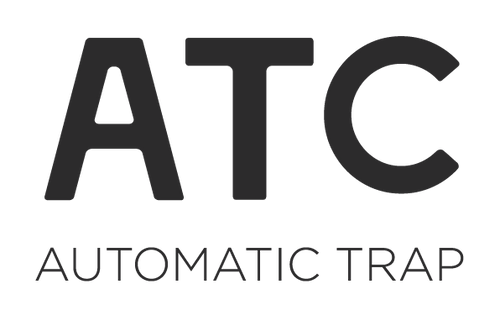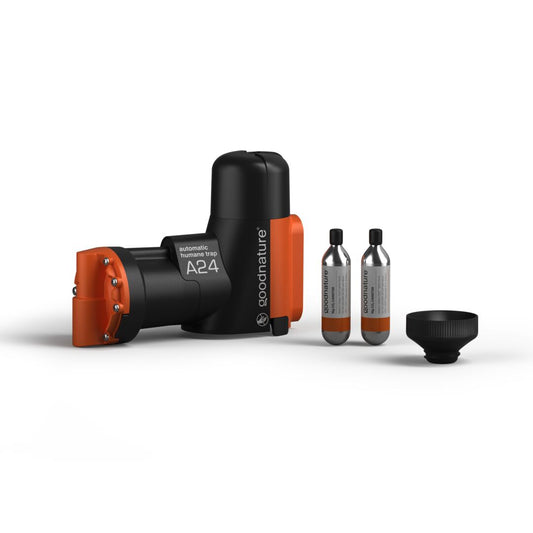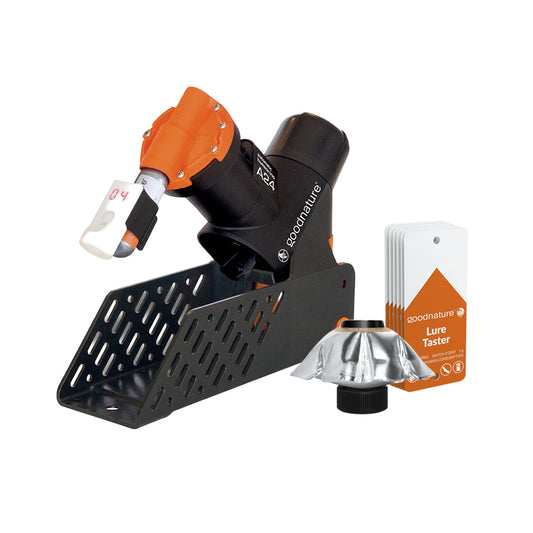
The National Wildlife Research Center (NWRC) and the United States Department of Agriculture (USDA) have conducted a report on the efficacy of the A24 for the use of dispatching house mice (Mus musculus).
The United States Department of Agriculture, is responsible for the development and execution of federal laws and conduct research related to farming, forestry, and food. One challenge that many farmers face annually is rodent infestation. Commensal rodents such as rats and mice are estimated to cost the global economy over $100 billion. They consume crops, foul food storage facilities, damage infrastructure and are implicated in the transmission of over 50 diseases.
Invasive rodents including the black or roof rat (Rattus rattus), the Norway or brown rat (Rattus norvegicus) and European house mouse (Mus musculus) threaten our food, shelter, health, and jeopardize the livelihood of billions of people around the world.
Traps have proven effective but, they are generally labor-intensive and require frequent visits to reset, and re-bait. For large applications in agriculture the upkeep of traps can be expensive and impractical. Additionally, many traditional trapping methods are inefficient and inhumane.
The USDA survey conducted by Ph.D. Research Scientist Aaron B. Shiels aimed to explore how efficiently and humanely the device dispatches one of the world's most common rodent pests, the house mouse. The study was conducted because of the abundance of house mice not only in the states but worldwide.
Worldwide house mouse range
The Goodnature A24 Automatic Trap was created in New Zealand where invasive rats were decimating native plant and animal species. The A24 gained notoriety as a device that was able to control invasive rodent populations without the use of poisons and was also declared a certified humane trap because of its killing efficiency. The success of the A24 controlling rats in New Zealand has subsequently attracted worldwide attention.
In the U.S. alone, pest control costs due to house mice, total approximately $500 million. Due to the global economic impact of nuisance house mice, there is interest in knowing if the A24 is also effective at controlling these much smaller rodents in the same efficient and humane manner.
To examine if the A24 could be an effective means of controlling house mice, the U.S. Department of Agriculture (USDA) was enlisted to conduct a research study. The objective was to specifically test if the Goodnature A24 trap using the Goodnature Chocolate Lure would be successful at both dispatching mice and causing immediate death. The immediacy of death is an important humane consideration of any animal control device. The USDA interprets a ‘humane death’ as an ‘immediate death’. International standards define immediate death as an irreversible loss of consciousness within 3 minutes of impact from the trap.

The USDA study began with the collection of 40 wild-caught mice of equal sex ratio. The mice were divided into 2 groups that would be exposed to the trap either during the day, or at night. These 2 groups were further subdivided to test the trap mounted vertically using the provided bracket, or installed in the available Goodnature portable trap stand. All mice were acclimated to laboratory conditions prior to the study beginning.
The study involved placing the mice into individual pens for a trial period of 4 consecutive days, or until impact by the A24. The mice were given a 1 day acclimation period to the pen without an A24 present, followed by up to 3 consecutive days of the A24 being introduced for 7 hours each day. Mice were provided with water and shelter for the duration of the trial period, but food was provided intermittently. The trial followed this schedule:
- Day 0: Acclimation with food present
- Day 1: Rodent food present with the A24
- Day 2: Food was removed 16 hours prior to the start of Day 2 and remained absent while the A24 was present.
- Day 3: Food was provided for the 16 hours before the start of Day 3, then food was again removed while the A24 was present.
Of the 40 mice trialed, 28 (70%) were killed by the A24 baited with Goodnature Chocolate Lure before the 3 day trial period expired. All 28 mice that were killed experienced instant death in accordance with internationally defined standards. The average time for researchers to clinically define death was under 1 minute after A24 impact. Upon necropsy of the deceased mice, 25 of 28 died from spinal fracture, and the remaining 3 died of combined skull and spinal fracture. These findings confirmed all 28 deaths were the result of impact from the A24. There were no instances of house mice triggering the trap and living or being injured and therefore, triggering the trap resulted in 100% mortality from impact. The study found no statistical significance in differential efficacy of the A24 between any of the trial groups (male/female, day/night, vertical/angled) suggesting that the trap is equally effective in all circumstances.
The USDA findings accurately demonstrate the A24 to be 100% effective at delivering instant death when triggered by house mice. Death from the A24 impact is therefore humane, occurring in less than 1 minute and falling well under the allotted 3-minute window for irreversible loss of consciousness to occur. The USDA study additionally concludes that the A24 represents a non-toxicant alternative to rodenticide, further noting the potential of this trap as a successful tool for controlling rodent populations in a variety of settings including urban, agricultural, and natural areas.
rodent control tool that can be used on a number of various settings ie - urban, agricultural.
Read the full report here
*Findings and conclusions in this report have not been formally disseminated by the U.S. Department of Agriculture and should not be construed to represent any agency or determination policy.






